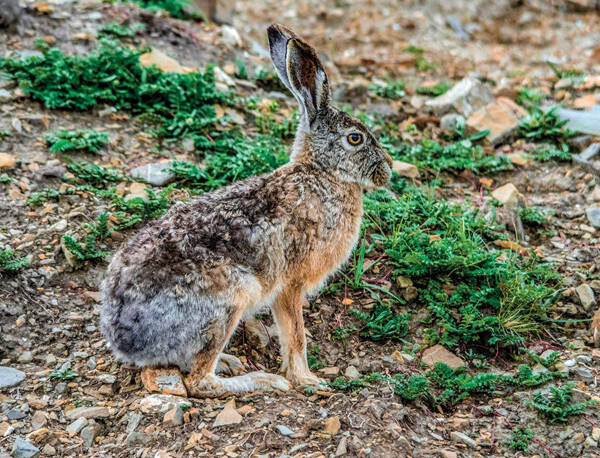Lepus oiostolus
IUCN
LCBasic Information
Scientific classification
- name:Lepus oiostolus
- Scientific Name:Lepus oiostolus,Southwest rabbit, Yunnan rabbit
- Outline:Lagoiformes
- Family:Lagomorpha Leporidae Lepus
Vital signs
- length:33-48cm
- Weight:1.5-2.5kg
- lifetime:
Feature
Yunnan rabbit dried feces can be used as medicine, with a pungent and flat nature. It has the functions of detoxification, insecticide, eye-clearing and cataract removal. It is mainly used to treat red eyes, malnutrition and hemorrhoid fistula.
Distribution and Habitat
In China, it is distributed in Yunnan, western Guizhou and the Yunnan-Guizhou Plateau in southwestern Sichuan. Abroad, it is distributed in Myanmar.
Yunnan rabbits mainly live in mountain shrubs, sparse grass slopes, forest edge reclamation areas and mountain roads at an altitude of 1500-3200 meters.
Appearance
The individuals are medium-sized. The average body length is 420mm. The ears are relatively long, longer than the length of the hind legs. The average ear height is 115mm, and the average hind leg length is close to 110mm. The hair on the back is long and soft, unlike the dense and curly hair of the plateau rabbit. The back of the tail is brownish yellow with no stripes. The sides of the body (starting from the outside of the chest, backward through the ventral side to the hip side, including the outside of the front and back) have obvious brownish yellow tones. There is usually a grayish-white stripe from the muzzle to the base of the ear. The tip of the ear is black. The inside of the ear is light gray. The abdomen is white. The skull is relatively slender. Other features are no different from other wild rabbits. There are 2 pairs of upper incisors, 1 pair of lower incisors, no canines, 3 pairs of upper premolars, 2 pairs of lower premolars, and 3 pairs of upper and lower molars. 28
Details
In the past, Yunnan rabbits were long considered a subspecies of the plateau rabbit (Lepus oiostolus). Mr. Luo Zexun, a famous rabbit scientist in my country (1981), finally recognized Yunnan rabbits as an independent species, which was later widely recognized. There are three subspecies, and whether they are all established requires further research.

Yunnan rabbits often build their nests in dense bushes or grass. They live in caves. They usually forage alone or in pairs from dusk to night. Their food is mainly tender leaves of grasses or small shrubs. They also often eat tender branches and leaves of wheat seedlings, corn seedlings, leguminous crops and sweet potatoes in farmland.

Yunnan rabbits breed in summer and autumn, producing 2-3 litters per year, with 1-4 pups per litter. One fetus was dissected in mid-May, and its fur had basically grown. A juvenile weighing 1059 grams was collected in mid-June. A pregnant female rabbit was collected in August.
Listed in the IUCN Red List of Threatened Species in 2018 ver 3.1 - Least Concern (LC).








